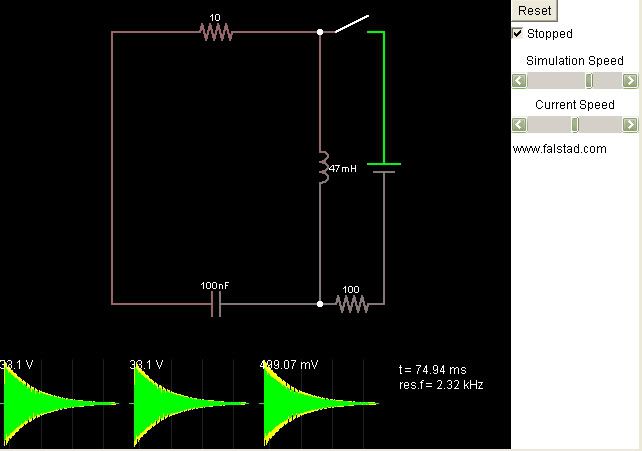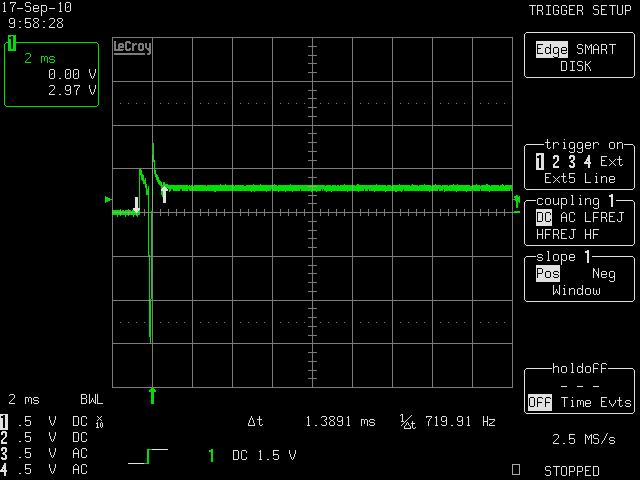I am trying to make an oscillating circuit, but so far luck had been avoiding me. Here is the circuit design I am trying to achieve and corresponding fading away oscillation.

I am supposed to get some oscillation that is gradually fading away. But all I get are two jinks, like this:

The components I am using are:
- 10 Ohm resistor,
- 100 nF ceramic capacitor,
- 47 mF standard radial lead inductor.
Is it possible that this type of inductor is polarized? I am saying that because one of its legs is significantly longer than the other. That is usually a sign of polarization.

I am supposed to get some oscillation that is gradually fading away. But all I get are two jinks, like this:

The components I am using are:
- 10 Ohm resistor,
- 100 nF ceramic capacitor,
- 47 mF standard radial lead inductor.
Is it possible that this type of inductor is polarized? I am saying that because one of its legs is significantly longer than the other. That is usually a sign of polarization.
